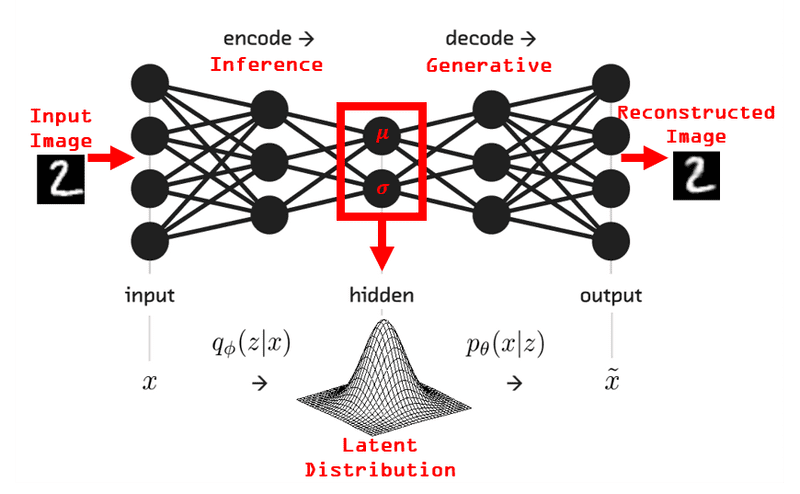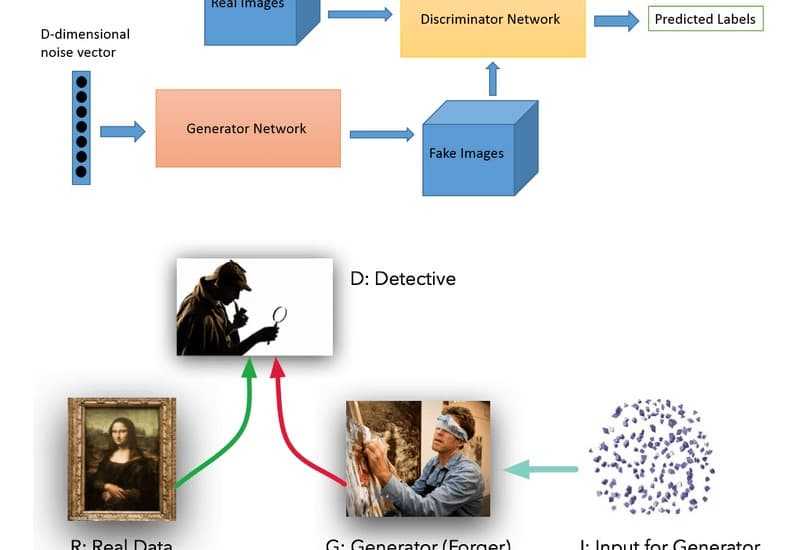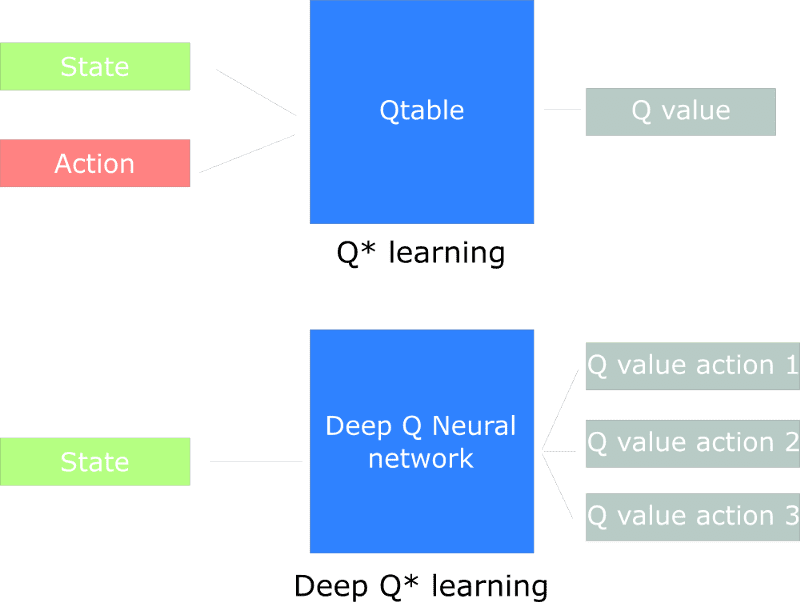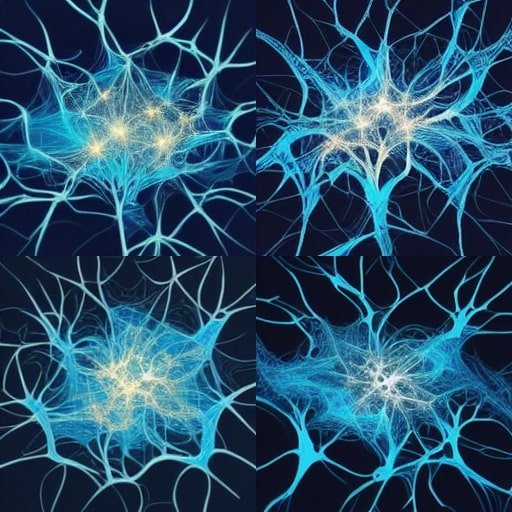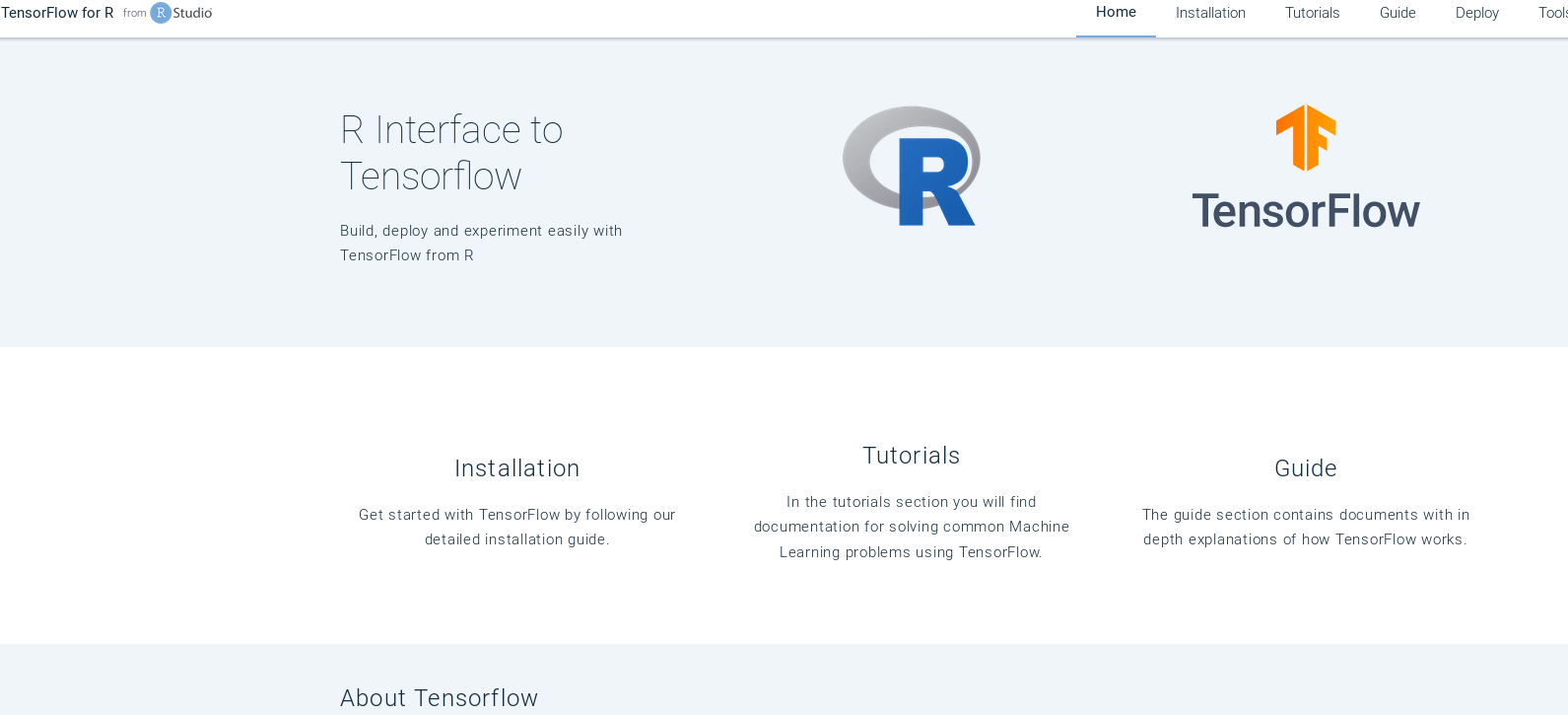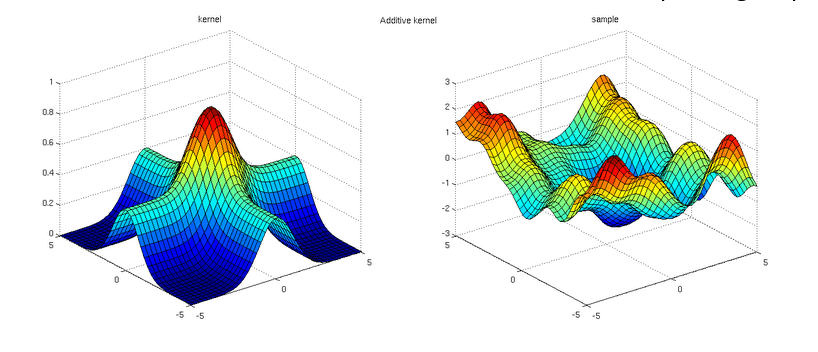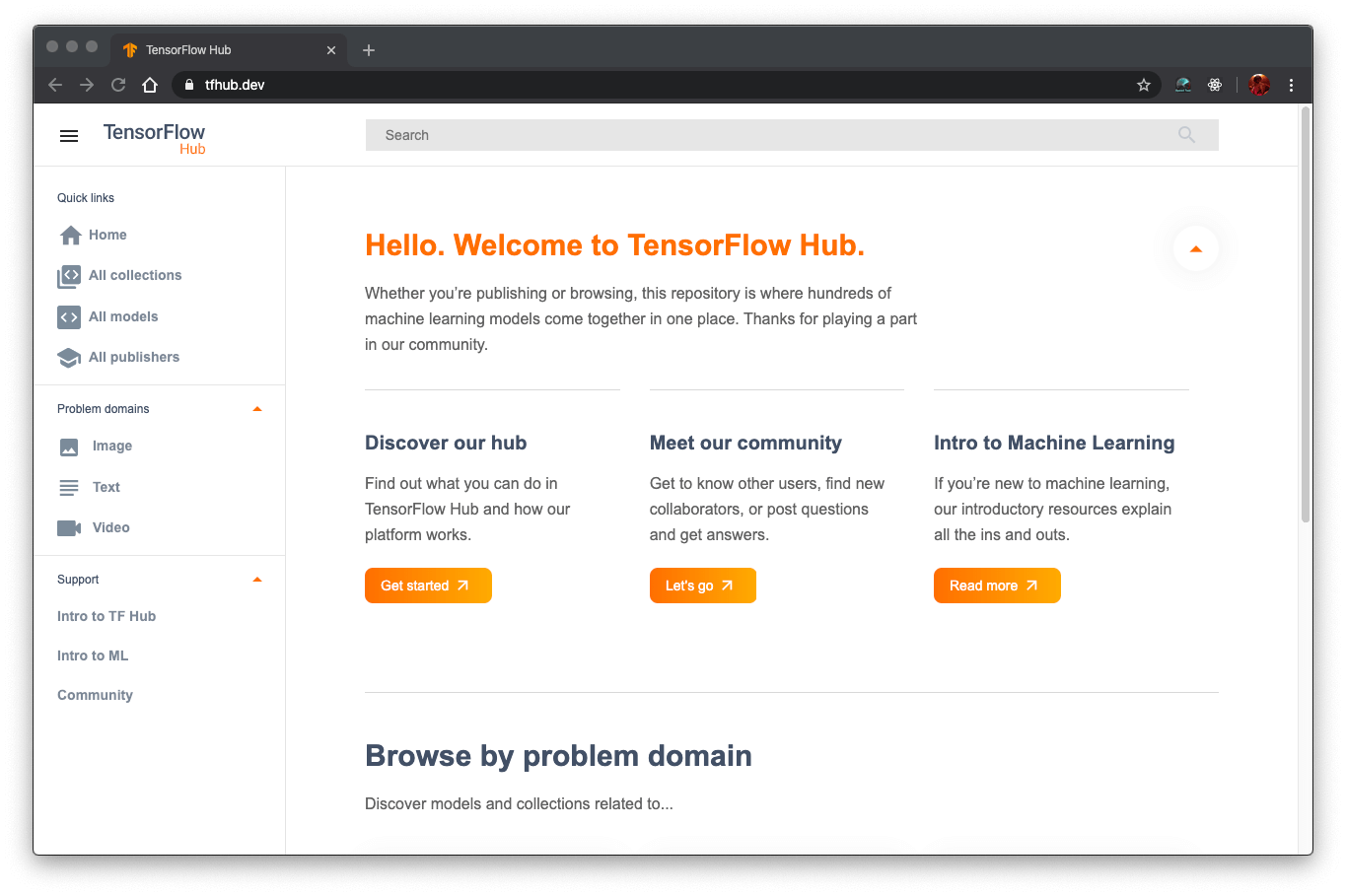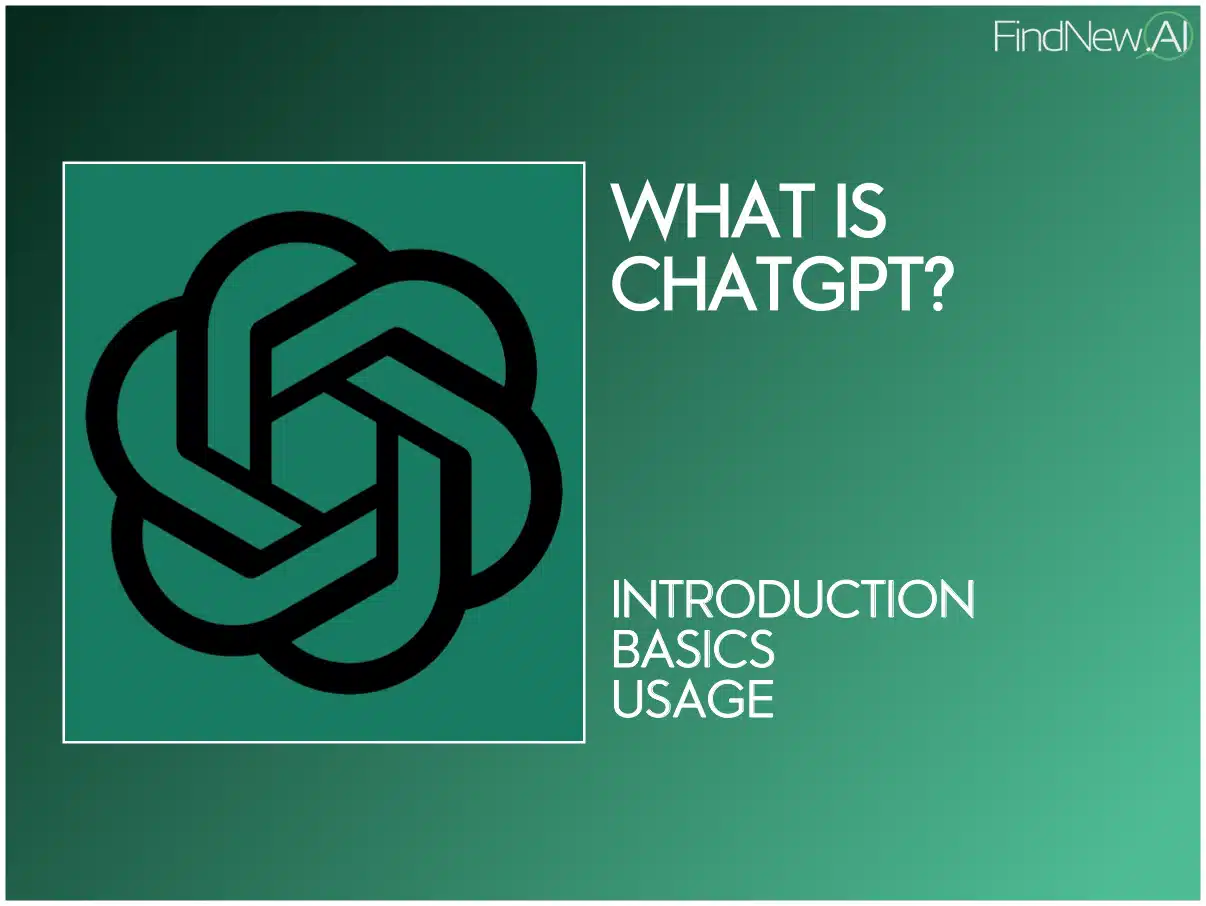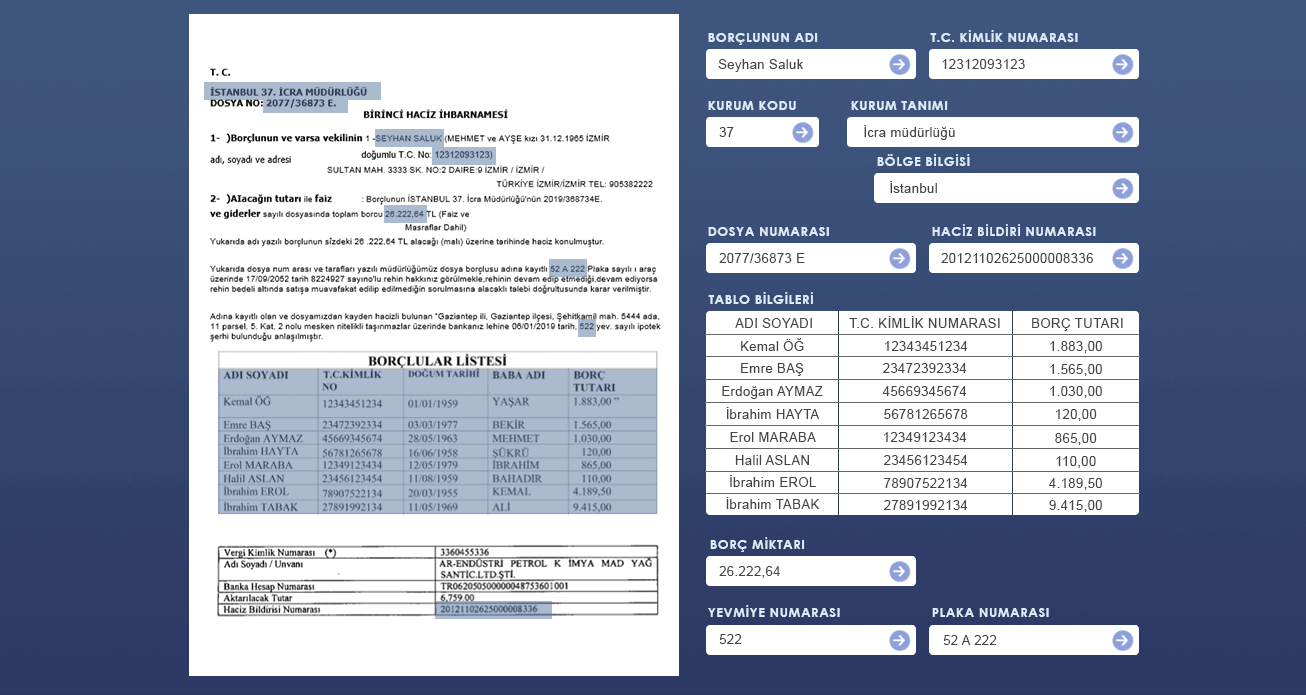How labor and the liberal party are campaigning and communicating differently
In a world where social media amplifies every move, both parties face intense scrutiny. From policy pledges to personal attacks, how these leaders communicate shapes how Australians perceive them. But how is media coverage, and in turn, social reaction, driving the conversation with voters? Dive into the data that shows how social conversations reveal a stark disconnect […] The post How labor and the liberal party are campaigning and communicating differently appeared first on Isentia.

In a world where social media amplifies every move, both parties face intense scrutiny. From policy pledges to personal attacks, how these leaders communicate shapes how Australians perceive them. But how is media coverage, and in turn, social reaction, driving the conversation with voters? Dive into the data that shows how social conversations reveal a stark disconnect between the political narratives and voters’ concerns.
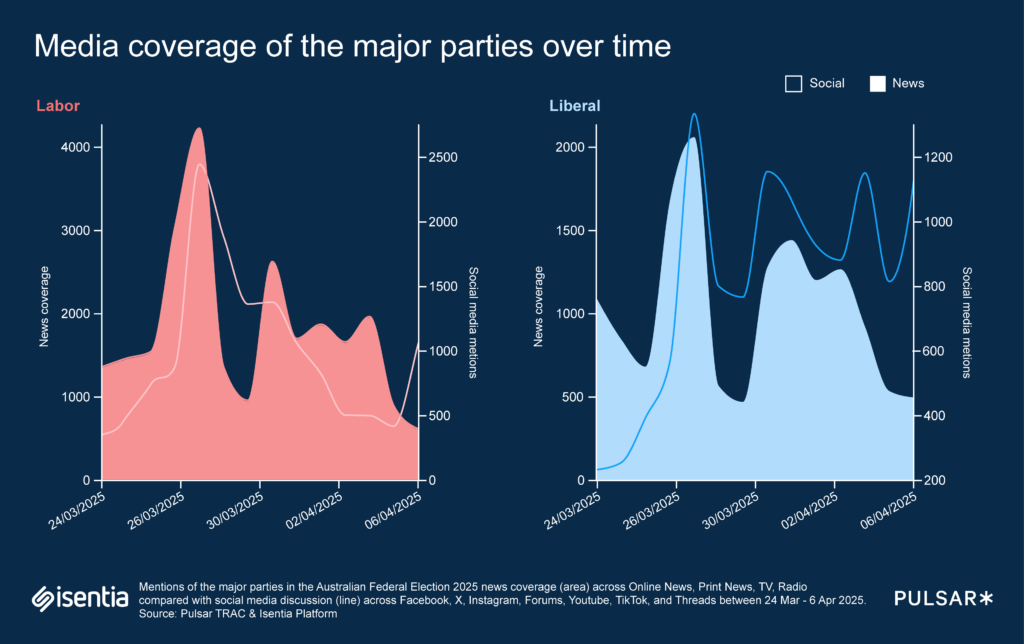
Social and news discussions have converged since the election was called on March 28th, with both major parties ramping up their campaign strategies. However, Isentia’s tracking since January shows that media coverage and social discussion have been substantially focused on the Labor Party, where media and social volumes have been consistently elevated.
The past two weeks have also seen sharply contrasting approaches to communications between the two parties. Prime Minister Anthony Albanese pledged $150 million for the Flinders University healthcare hub on March 31, with the Coalition quickly matching the offer. While some praised the investment, others questioned the Liberals’ motives—reflecting a growing desire among voters for original policy ideas, as both parties compete for support on healthcare.
In the following days, social media discussions centred on two main issues for the Liberal Party: the controversy over a volunteer removing opposition posters, which sparked accusations of unfair tactics, and a candidate’s comments against women in combat roles, which drew further criticism against the party.
Social chatter then shifted to the AEC’s dismissal of complaints about Abbie Chatfield’s interviews with Anthony Albanese and Greens leader Adam Bandt, finding no evidence of political bias. Despite significant announcements leading into the weekend, social discussion focused on the ABC’s coverage of Peter Dutton inadvertently injuring a camera operator, in comparison to covering Anthony Albanese’s fall off a stage. Social media claimed the coverage focused on Dutton’s accident was a double standard in the ABC’s reporting on Labor.
The last fortnight has shown Labor adopting a policy-focused narrative, presenting itself as the party of economic responsibility and social equity. Labor is focused on offering modest tax relief and emphasising long-term reforms to Medicare and the health system. In contrast, the Liberal Party seems to be trying aggressive, headline-grabbing tactics, focusing on cultural issues and personal attacks to generate momentum.

Media and social coverage over the past month show that both Dutton and Albanese have focused their communications on positioning themselves against each other. Albanese frequently criticises Dutton’s policies as “lazy,” calling the former work-from-home policy “borrowed from the Trump administration” and accusing him of stoking division with his “shambolic” ideas.
In contrast, Dutton targets Albanese’s economic management, labelling him “weak and incompetent” for his handling of U.S. tariffs and national debt while criticising Labor’s energy policies and spending. Dutton has accused Labor of running “scare campaigns,” and Albanese seems to counter this by calling Dutton and the Liberals dishonest, even accusing them of trying to “rewrite history.” Peter Dutton’s proposal to leverage Australia’s defence alliance with the US, akin to NATO-style cooperation in trade negotiations over Trump’s tariffs, also sparked controversy. Labor labelled it “reckless”, warning it could jeopardise national security.
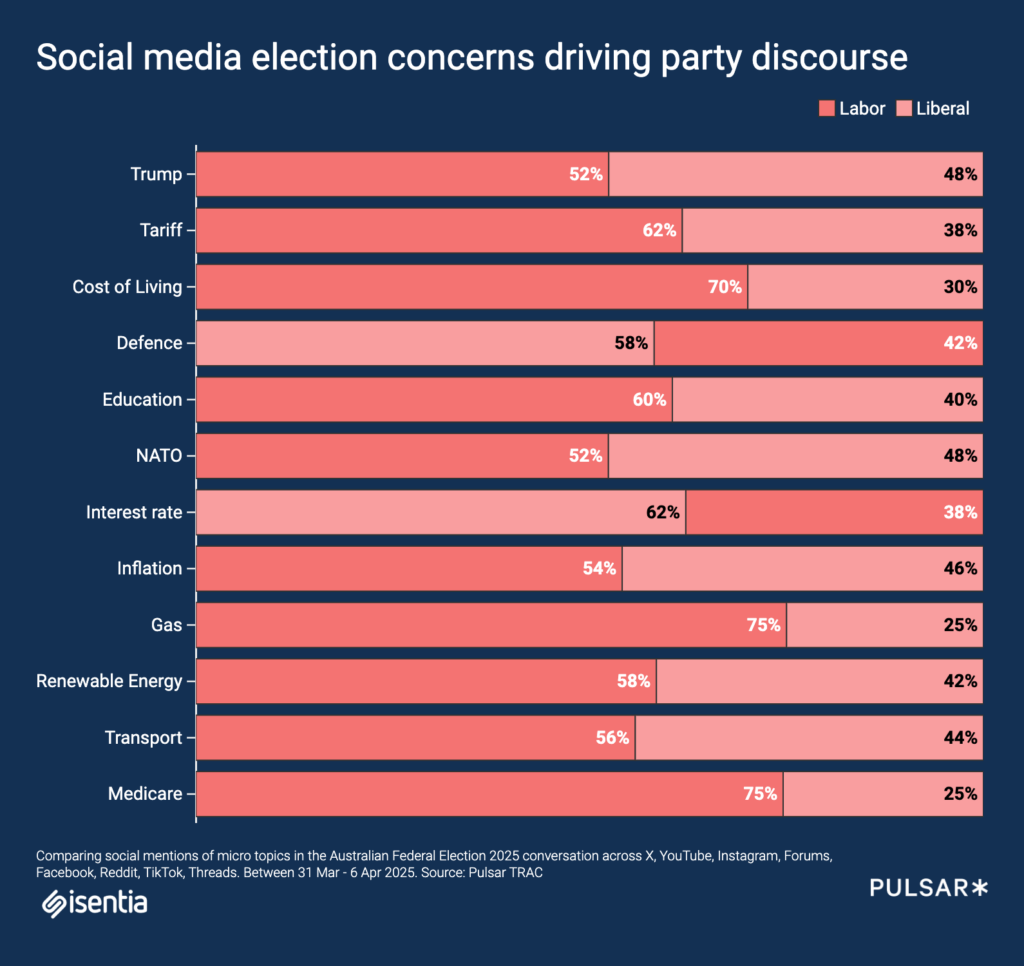
While Labor looks to be trying a more measured tone, they’ve still faced backlash from the public, with voters dismissing the government’s $5-a-week tax cut as symbolic rather than substantial. Post the Federal Budget, Albanese’s media appearances were also criticised across social channels as lacking empathy and authenticity.
Albanese’s terse response to a journalist’s question was widely shared as an example of poor media engagement and the growing perception that Labor may be on the defensive. External narratives such as claims about foreign influence and immigration-based voter strategy complicate the party’s messaging, creating doubt over integrity and intent.
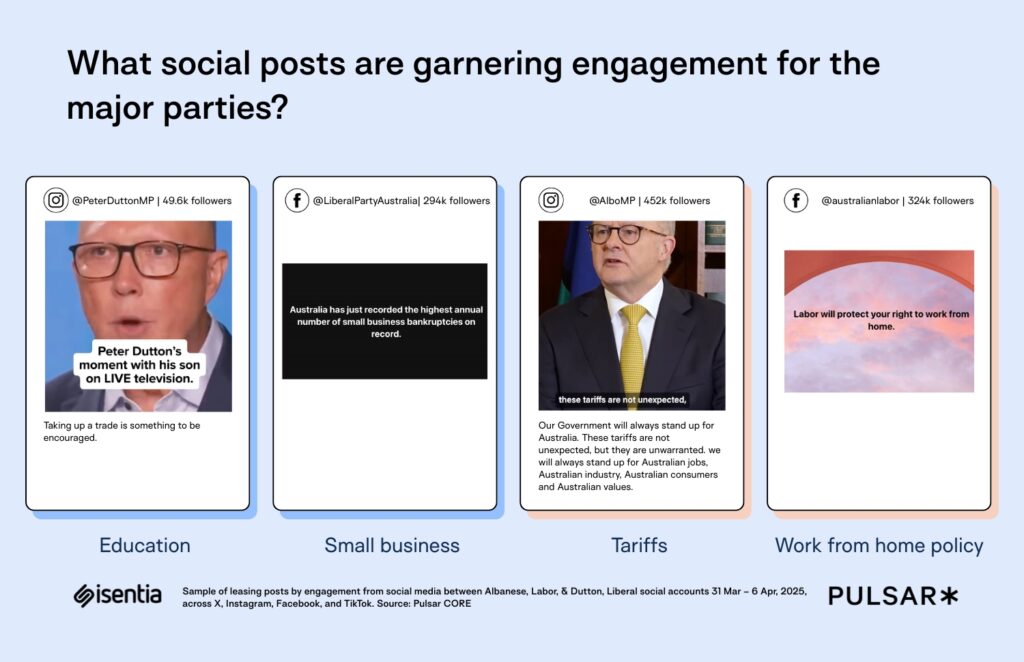
When we look at the social posts from the parties over the past week, the Liberals’ top-performing posts feature personal stories, like Dutton’s son becoming a tradesman, highlighting values that resonate with construction and small business audiences. Posts that focus on cost-of-living frustrations under Labor also drive strong engagement.
By contrast, Labor’s content had the greatest engagement when commenting on the party’s leadership on global issues. Albanese’s post on the government’s steady response to Trump’s tariffs had high engagement, with many rejecting Trump-style politics and supporting Albanese’s stance. Labor also looks to be gaining traction online after the Liberal Party backtracked on scrapping the public service’s work-from-home policy, with Labor framing themselves as defending flexible work.
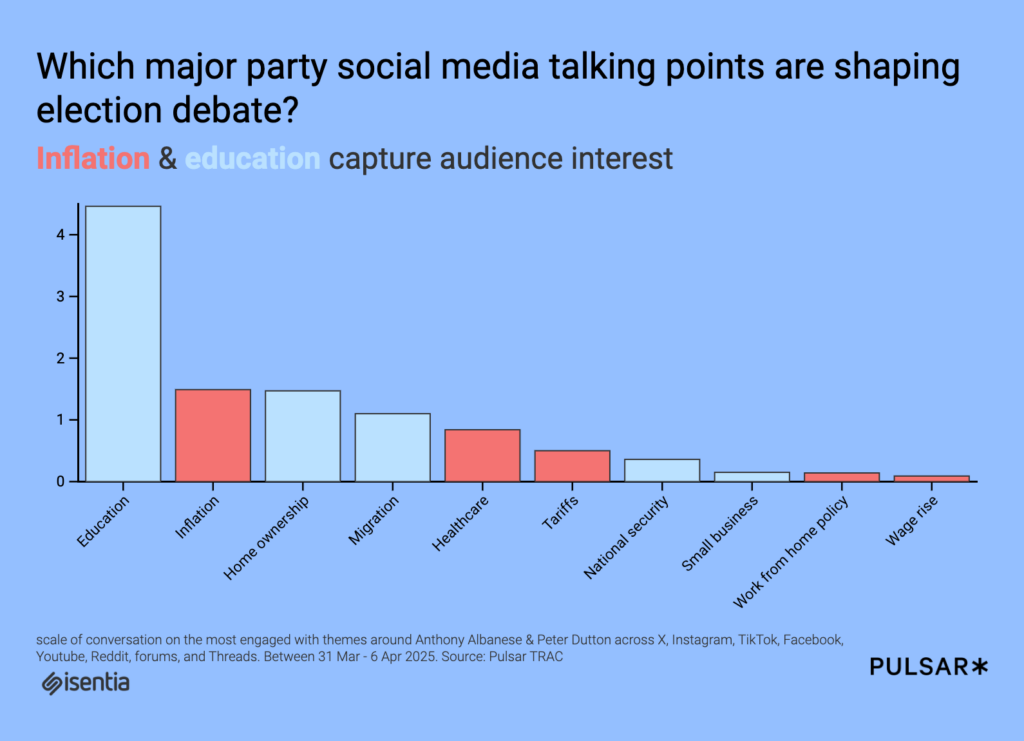
As Dutton and Albanese outline their campaign points on social media, audiences are reacting strongly. Dutton’s focus on trade skills and home-ownership, aimed at younger Australians, resonates with some, but is met with widespread frustration and cynicism from others.
Nationals Senator Bridget McKenzie was featured in news coverage and shared on feeds after she hinted on ABC’s 7.30 that there would be federal education department budget cuts under a coalition-led government—again, a policy adopted in the US. Meanwhile, reactions to Shadow Treasurer Angus Taylor’s comments on inflation and wage rises were broadly disparaging, with social media users ridiculing his data and questioning his competence.
Healthcare is a key focus for Labor, especially mental health support and health infrastructure. Social media users, particularly Gen Z and millennials, are demanding free mental health services, yet skepticism about government promises remains widespread.
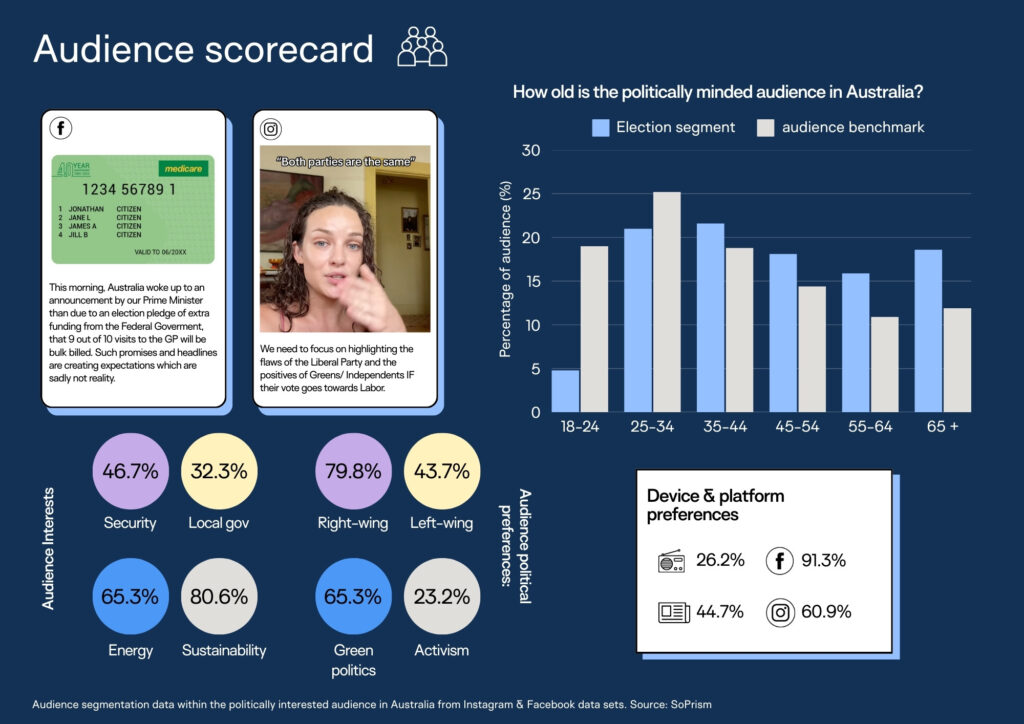
After examining how the parties are positioning their campaign pledges and analysing how political leaders are framing each other, it’s clear no amount of rhetoric or spin will reduce the levels of skepticism from audiences, especially among young voters.
Data from the Pulsar platform shows that audiences from Australian Instagram and Facebook are reflecting trends seen amongst American voters in 2024. Interestingly, younger people aged 25-44 seem to be leaning more towards right-wing politics in the content across these platforms.
Reaction to top-performing election content online reveals a potentially bleak outlook for the major parties and growing disillusionment. With security, sustainability, energy, and local politics being key concerns for online audiences, will the parties look to address these core concerns in the next three weeks?
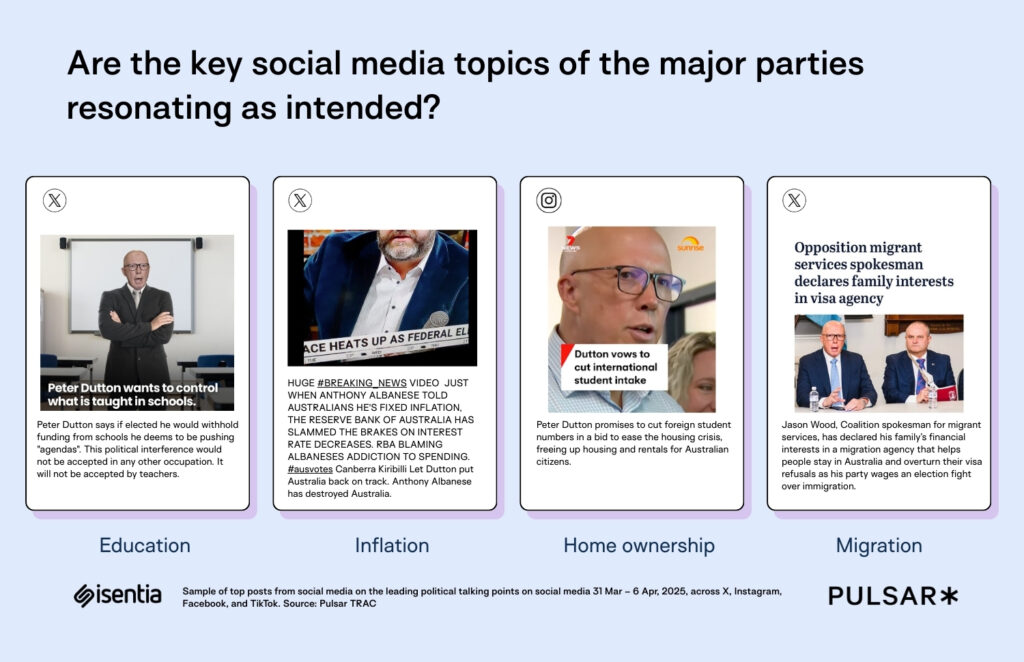
On education, Dutton’s stance to remove “woke” ideologies from schools has divided social media. Supporters back his position, while others criticise it as politically charged and divisive, raising concerns about political interference in education. Dutton’s proposal to cap international student numbers to ease the housing crisis has also drawn criticism. Pundits have pointed out that international students only account for 4% of rental demand, calling the policy a distraction from real solutions. At the same time, Coalition spokesperson for migrant services Jason Wood faced criticism over his financial ties to a migration agency that helps overturn visa refusals, prompting accusations of a conflict of interest amid the immigration debate.
Meanwhile, social media reactions to the government’s handling of inflation highlight significant frustration, particularly with the RBA’s interest rate decisions. Social media commentary accused Albanese of misleading the public by linking government spending to rate hikes. However, many expressed disbelief over claims that government actions were directly tied to inflation, dismissing them as “lies” or “political spin.”
While the Labor and the Liberal campaigns sharpen their communication strategies to sway voters, social media responses suggest a mixed reception. Labor’s policy-driven approach often comes across as cautious, while the Liberals’ more combative tactics spark division. Despite their efforts, neither party has fully managed to align their messaging with voter expectations, leaving room for continued debate and shifting sentiments.
Discover more of our political news services
The post How labor and the liberal party are campaigning and communicating differently appeared first on Isentia.





























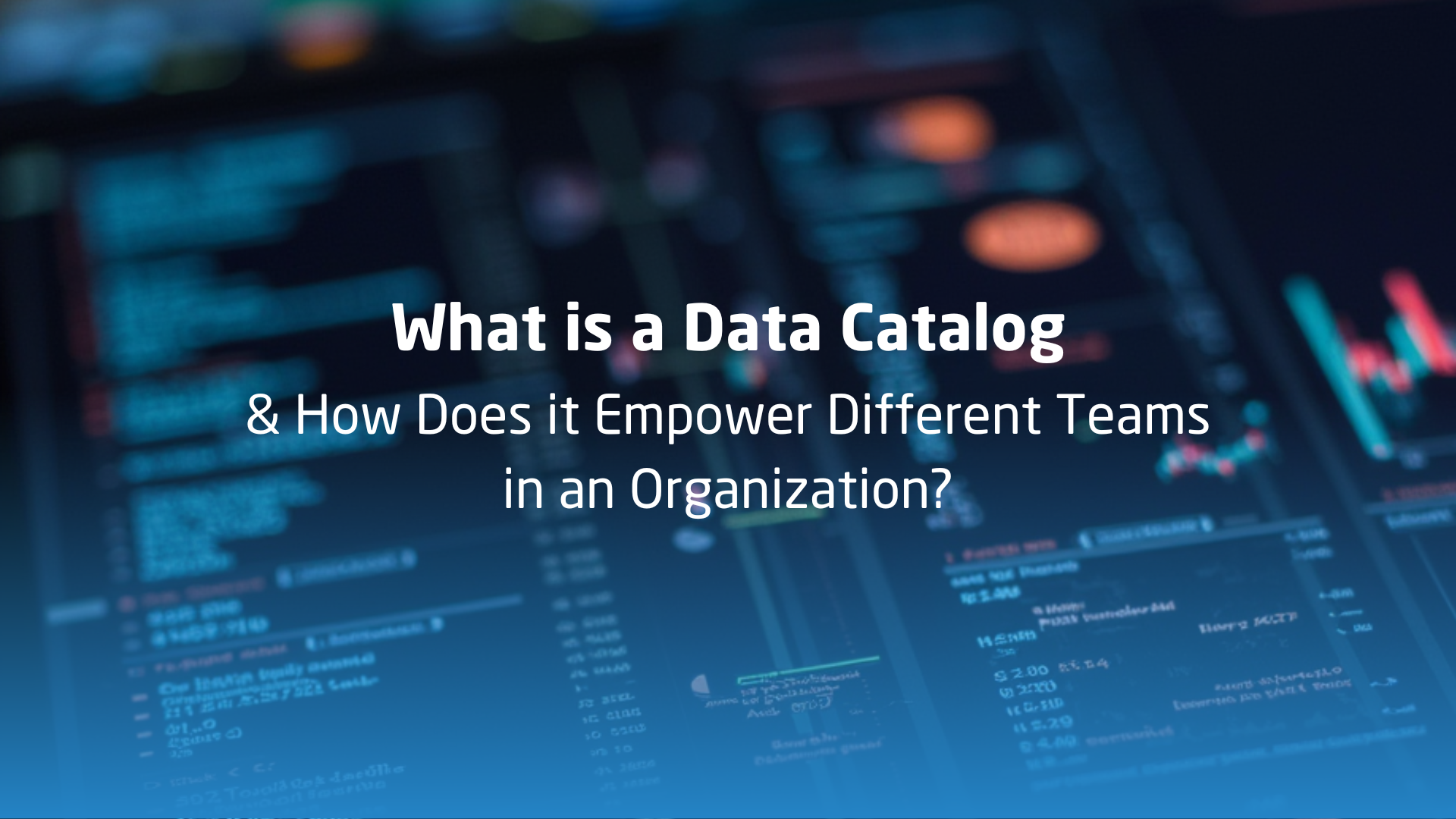














![[The AI Show Episode 143]: ChatGPT Revenue Surge, New AGI Timelines, Amazon’s AI Agent, Claude for Education, Model Context Protocol & LLMs Pass the Turing Test](https://www.marketingaiinstitute.com/hubfs/ep%20143%20cover.png)


















